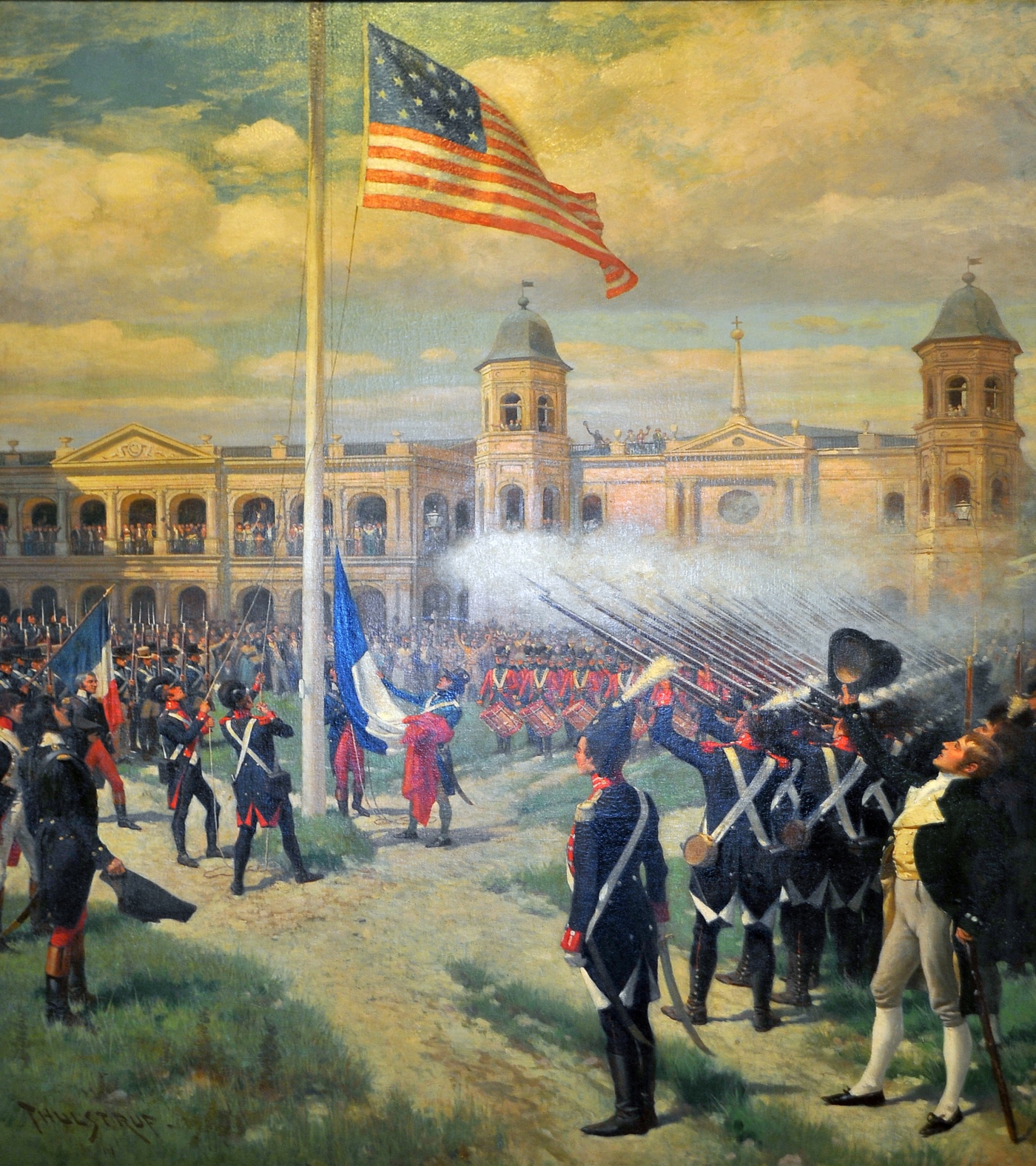
quarta-feira, abril 30, 2025
Os Estados Unidos adquiriram a Napoleão I, há 222 anos, o território da Louisiana

Postado por
Fernando Martins
às
02:22
0
bocas
![]()
Marcadores: Compra do Louisiana, França, Louisiana, Napoleão, Nova Orleães, USA
sexta-feira, fevereiro 07, 2025
Earl King nasceu há 91 anos...
Postado por
Fernando Martins
às
09:10
0
bocas
![]()
Marcadores: blues, Earl King, guitarra, he Things I used to do, Louisiana, música, Nova Orleães, rythm and blues
terça-feira, abril 30, 2024
Os Estados Unidos adquiriram o território da Louisiana há 221 anos
Postado por
Fernando Martins
às
02:21
0
bocas
![]()
Marcadores: Compra do Louisiana, França, Louisiana, Napoleão, Nova Orleães, USA
quarta-feira, fevereiro 07, 2024
Earl King nasceu há noventa anos...
Postado por
Fernando Martins
às
00:09
0
bocas
![]()
Marcadores: blues, Earl King, guitarra, Lonely nights, Louisiana, música, Nova Orleães, rythm and blues
domingo, abril 30, 2023
A França vendeu o território da Louisiana há duzentos e vinte anos
Postado por
Fernando Martins
às
00:22
0
bocas
![]()
Marcadores: Compra do Louisiana, França, Louisiana, Napoleão, Nova Orleães, USA
sábado, abril 30, 2022
Os Estados Unidos da América compraram o território da Louisiana há 219 anos
Postado por
Fernando Martins
às
02:19
0
bocas
![]()
Marcadores: Compra do Louisiana, França, Louisiana, Napoleão, Nova Orleães, USA
sexta-feira, abril 30, 2021
Os Estados Unidos da América compraram o território da Louisiana há 218 anos
Postado por
Fernando Martins
às
02:18
0
bocas
![]()
Marcadores: Compra do Louisiana, França, Louisiana, Napoleão, Nova Orleães, USA
quinta-feira, fevereiro 07, 2019
Earl King nasceu há 85 anos!
Postado por
Fernando Martins
às
08:50
0
bocas
![]()
Marcadores: blues, Earl King, Everybody's Carried Away, guitarra, Louisiana, música, Nova Orleães, rythm and blues
segunda-feira, abril 30, 2018
Os Estados Unidos da América compraram o território da Louisiana há 215 anos
Postado por
Fernando Martins
às
02:15
0
bocas
![]()
Marcadores: Compra do Louisiana, França, Louisiana, Napoleão, Nova Orleães, USA
sexta-feira, abril 20, 2018
Uma explosão na plataforma Deepwater Horizon provocou uma grande maré negra há oito anos
A torre estava na fase final da perfuração de um poço, na qual se reforça com concreto o poço. Este é um processo delicado, pois há possibilidade de os fluidos do poço serem libertos descontroladamente. No dia 20 de abril de 2010 houve uma explosão na torre e esta incendiou-se, morrendo onze pessoas em consequência deste acidente, 11 outros foram encontrados com vida. Sete trabalhadores foram evacuados para a estação aérea naval em Nova Orleães e levados para o hospital. Barcos de apoio lançaram água à torre, numa infrutífera tentativa de extinguir as chamas. A Deepwater Horizon afundou-se a 22 de abril de 2010, em águas de aproximadamente 1.500 metros de profundidade, e os seus restos foram encontrados no leito marinho a aproximadamente 400 metros a noroeste do poço.
O derrame de petróleo resultante prejudicou o habitat de centenas de espécies de aves.
in Wikipédia
Postado por
Fernando Martins
às
08:00
0
bocas
![]()
Marcadores: explosão da plataforma Deepwater Horizon, Louisiana, maré negra, Petróleo, USA
terça-feira, abril 17, 2018
Earl King morreu há quinze anos
Postado por
Fernando Martins
às
15:00
0
bocas
![]()
Marcadores: blues, Earl King, guitarra, Louisiana, música, Nova Orleães, rythm and blues, The Things I used to do







